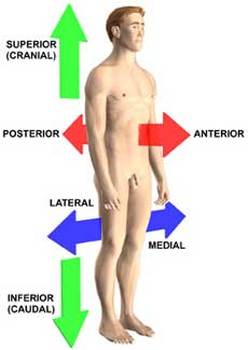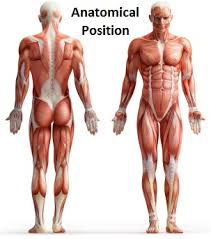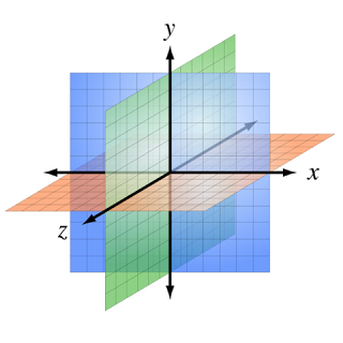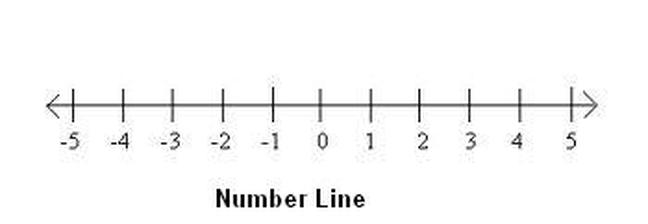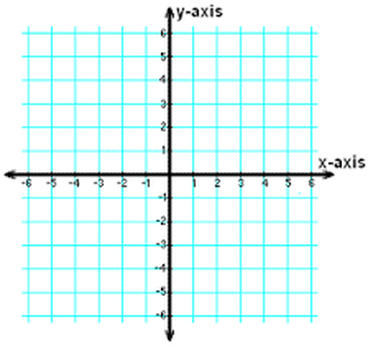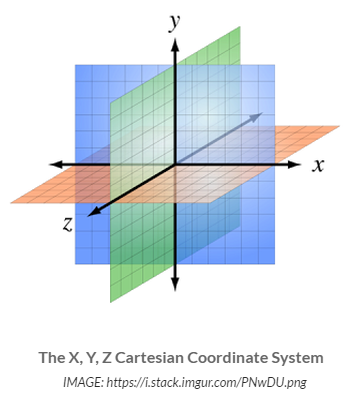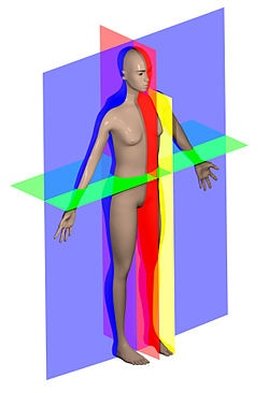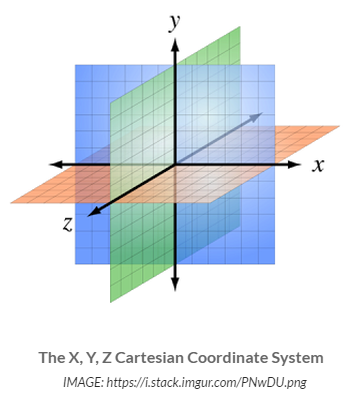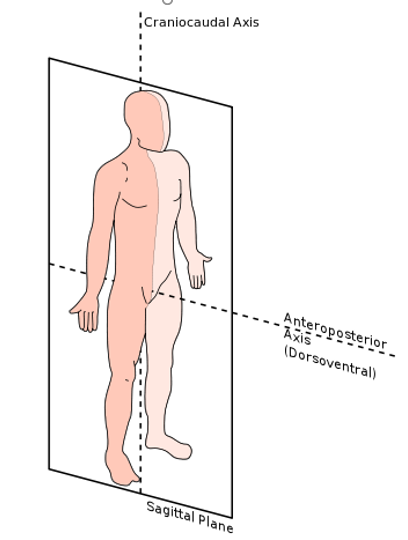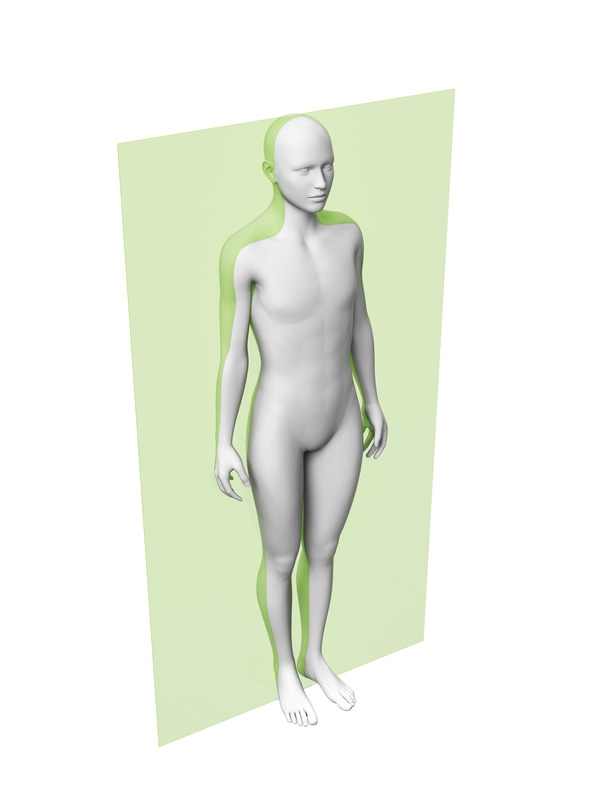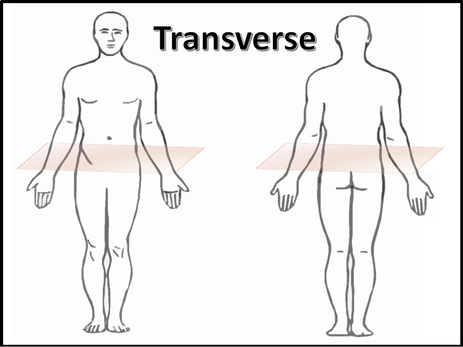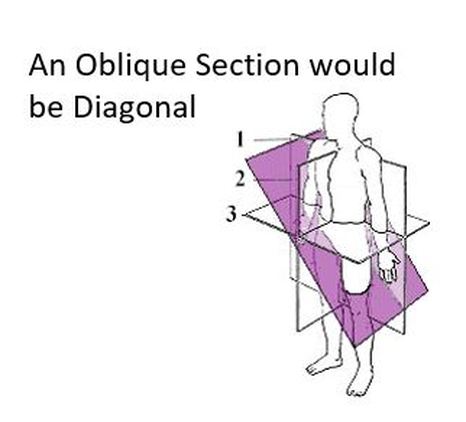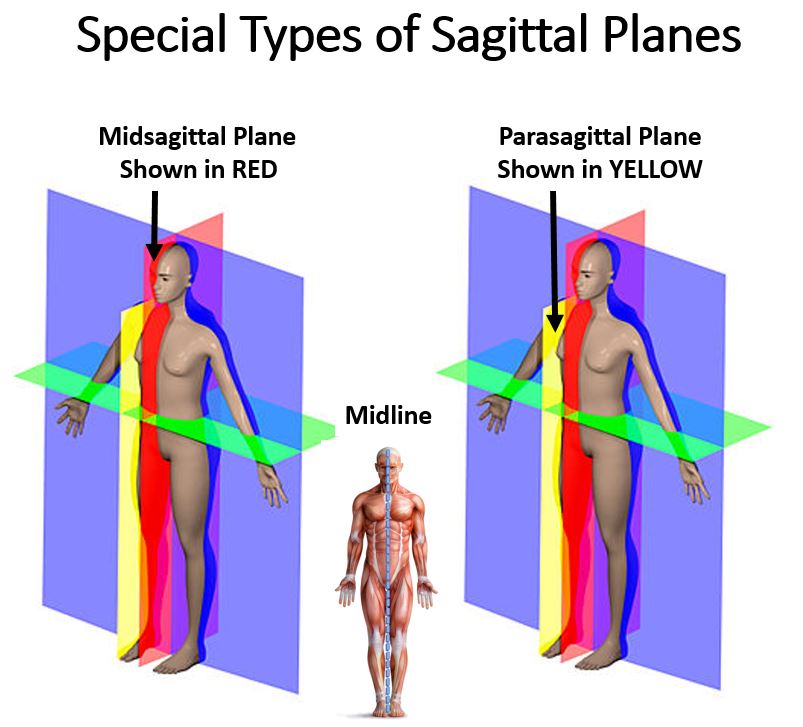|
|
|
Anatomical Planes
Before We Get Started...
Body Planes and Sections
The first dimension is a number line, noted in the Cartesian coordinate system as 'X'. A number line has only 1 dimension. That means that there is only left or right. No other "directionality" is possible in a world with only one dimension.
|
SInce humans (and all tangible matter humans know of) are not flat, we need to add a 3rd dimension to our Cartesian Coordinate system. Adding the 'Y' dimension, gives us depth.
This is important because we can superimpose the human form on this 3-dimensional grid and pinpoint with utmost accuracy any point inside the human body.
|
So, on this page we will be looking at planes!
We are not talking about the planes that fly through the air. We are talking about how a person is sliced...
OK that sounds pretty morbid...
Let's think about it this way. Take a loaf of bread. There are a lot of different ways to slice bread. You can bread into cut cross-sections (or coronal sections) like a loaf of bread. Or you can cut bread length-wise (sagittal section) like a hot dog bun. You can even cut the bread horizontally (transverse sections) separating the top from the bottom, like we see in a sliced bagel.
We are not talking about the planes that fly through the air. We are talking about how a person is sliced...
OK that sounds pretty morbid...
Let's think about it this way. Take a loaf of bread. There are a lot of different ways to slice bread. You can bread into cut cross-sections (or coronal sections) like a loaf of bread. Or you can cut bread length-wise (sagittal section) like a hot dog bun. You can even cut the bread horizontally (transverse sections) separating the top from the bottom, like we see in a sliced bagel.
The Anatomical Planes of... Bread?
|
Anatomical Planes Like the bread examples above, are very useful for communicating where a point of interest is located within the human body (or any body, for that matter). In anatomy we have three basic planes of sectioning through the body.
The 3 main planes of the body are: 1) sagittal 2) coronal 3) transverse |
|
On the 3-Dimensional Cartesian Coordinate System, the 'X', 'Y' and 'Z' lines intersect at what is called the origin (a.k.a. 0, 0, 0). The 'X' axis is the line that runs horizontally (right and left). The 'Y' axis is the vertical line running up and down. The 'Z' axis is the line that is going into the computer screen and out of the computer screen, giving us our dimension of depth. (You'll have to use your imagination here, until they make computer screens that are 3-Dimensional!)
If we orient our human on the grid above, in the anatomical position, the body would be facing forward, the head and feet would be located along the 'Y' axis and the arms would be located along the 'X' axis.
The sagittal plane would be Y, Z, the coronal plane would be X, Y and the transverse plane would be X, Z. Compare the image below to the 3-Dimensional Cartesian Coordinate System above.
The sagittal plane would be Y, Z, the coronal plane would be X, Y and the transverse plane would be X, Z. Compare the image below to the 3-Dimensional Cartesian Coordinate System above.
Anatomical Planes of the Human Body
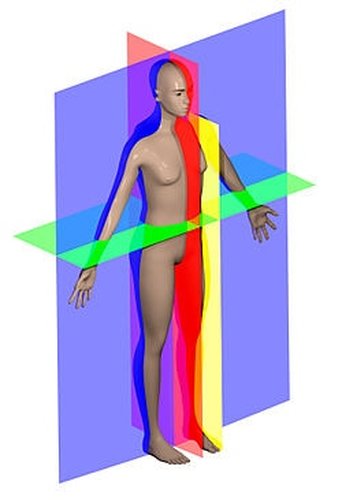
The plane shown in BLUE/PURPLE is the coronal plane.
The plane shown in GREEN is the transverse plane (also called a cross section).
The plane shown in RED and the plane shown in YELLOW are both sagittal planes, but they can also be referred to as...
The plane shown in RED is the sagittal plane that is exactly at the midline and it can be more specifically referred to as the midsagittal plane.
The plane shown in YELLOW is called a parasagittal plane. When a sagittal plane is moved either right or left from the midline, it is considered a parasagittal plane.
The Sagittal PlaneThe sagittal plane runs vertically through the body dividing the body into the left (sinister) and right (dexter) sides .
Coronal PlaneThe coronal plane (also known as the frontal plane) divides the body into front (ventral or anterior) portion of the body) and back (posterior or dorsal) portion of the body.
|
Transverse PlaneThe transverse plane separates the body horizontally. A "transverse section" can also be called a "cross-section" of the body. This plane separates the superior (or upper) part of the body from the inferior (or lower) part of the body.
ObliqueOblique sections are not very useful in most situations in medicine. It is rare to see this type of section done in histology or when using imaging techniques. However, this term can be used to characterize the angle of a wound.
|

